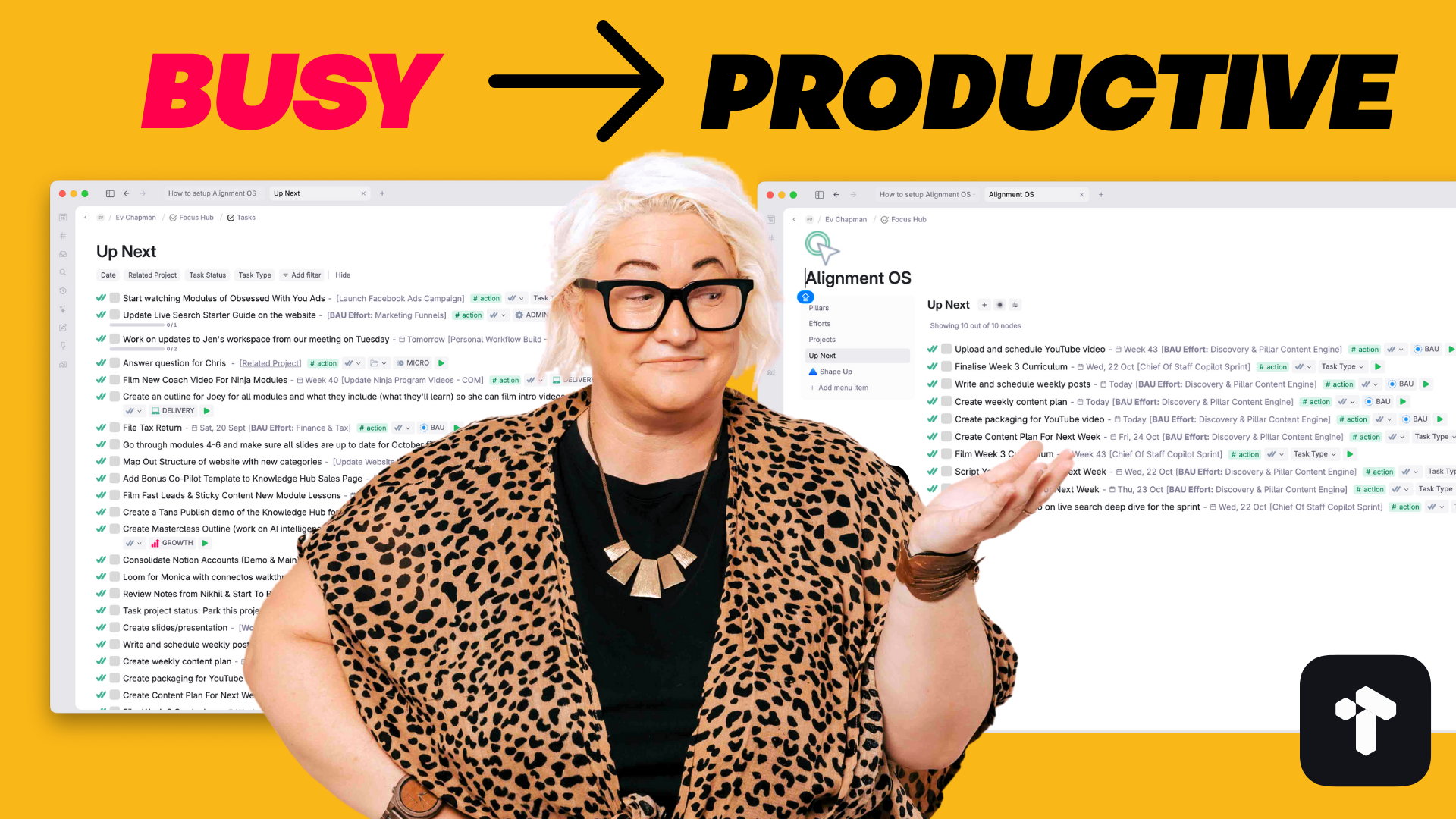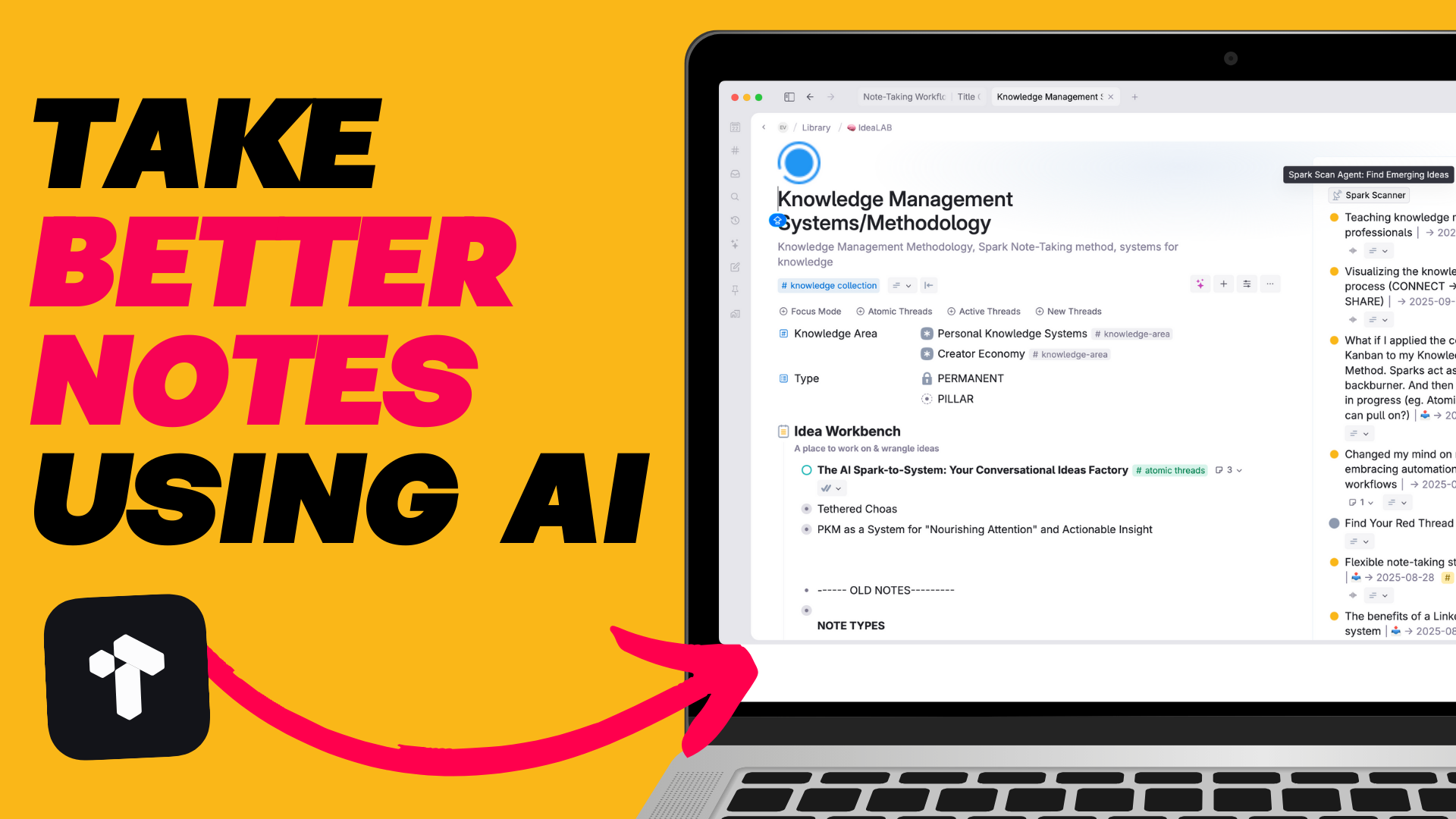
Recently our admin assistant finished up with us. And rather than just hire someone again, I decided to see if I could replace the role purely with AI.
I’ve always taken the mindset that we should treat our tools like any other employee. If we’re going to pay them they should earn their keep.
One of the jobs that needed to be done each month is writing all the event descriptions for our monthly trainings. We have 12 trainings across three coaching programs each month. And each have a different topic.
It took her a good few hours and the whole process spanned days with back and forth.

If you’re not familiar with Tana — it is a work management tool on steroids — with powerful features built right in like AI workflows, voice to text transcription & magic organisation abilities.
You can check it out here: Tana Inc
Just like working with my assistant I still needed to give a brief of what we would cover in the training.
To speed up this part I use the in built voice capture in Tana. It’s WAY faster than typing everything out & Tana transcribes it all in seconds. If I ramble too much I can just run a quick AI command to clean it up and make it make sense.

Voice capture in Tana can significantly speed up your workflows. Here is another article that will show you three ways to use voice to speed things up.
All up each training brief takes me about a minute to record.
And then it’s ready for Tana to do it’s work.
The Combination of AI + Structured Content in Tana means you can write some pretty epic AI Prompts that pull from the data that you already have stored in Tana.
Like I said, Tana is a work management platform. So I have a space where I’m organising all the monthly trainings. I already have information like the date of the training, who is hosting the training & I’ve just included the training brief.

Tana’s AI commands are like having custom GPT’s baked right into where you are organising and getting work done. So there is no switching back and forth between tools.
Learn more about how to setup & use Tana AI here.
All I needed was to write the AI Prompt.
Now, I’ve written hundreds of these training descriptions. I have a specific formula I use each time. I know the language, tone & how I want it to sound.
So I treat the prompt like I would train any other employee (it turns out it’s actually WAY easier to train AI than it is a human).
Just like with a human, it took some back and forth before it really understood & could replicate how I would write a prompt. But after a few tries we got there.
I give a brief explanation of what job we’re doing today. Sometimes I’ll tell it who it is (as in what role it’s performing). Other times I’ll just explain the task in detail.

The more you write prompts & run those prompts the more you’ll start to understand how to explain tasks better. On a side note I feel prompt writing has exposed how badly I was explaining tasks before!
Without some boundaries you will get rubbish. I’ve discovered some key rules that make a big difference every time I include them.
Some rules are specific to how I want the description structured. For instance ChatGPT loves to start most copy with a question. But I always think that sounds too ‘markety’ so I tell it never to use a question in the first sentence.
Other rules I use on every prompt to make it sound less AI Generated and more like I would write it.

Examples are like crack for the AI. Because it thrives on finding patterns & replicating them. And because I have written hundreds of these prompts I just go back through some of my best and include them in.

As a minimum I include three. But don’t skimp on examples. Honestly the more examples you have the better.
The last thing to include is links to where it can find the data it needs to do the task. For this task it needs the event topic, the event headline & the training brief.
And like I explained before, because we already have this information in Tana we just need to tell it in which fields it can find that data.

Now writing prompts like this takes time. So you have to think of this as training. Just like it takes time to train a human to do work — it’s the same for your prompts.
Do a first pass at your instructions. Then look at what it produces. If it’s not what you want — you haven’t explained it clearly enough. So go back to your instructions and tweak them. Then run it again and see the result.
Keep going through this feedback loop until you’re prompt can perform on command every time.
I guarantee the time investment on developing prompts like this will save you so much time in the long run.
And in any case it turns out it’s much easier & faster to train AI how to write good training descriptions than it ever was a human assistant!
And the whole process went from taking a few days turnaround to 15–20 minutes in total.
If you have jobs you need to delegate I highly recommend experimenting to see if AI can help. And Tana is an excellent tool for AI Workflows like this.
.png)



